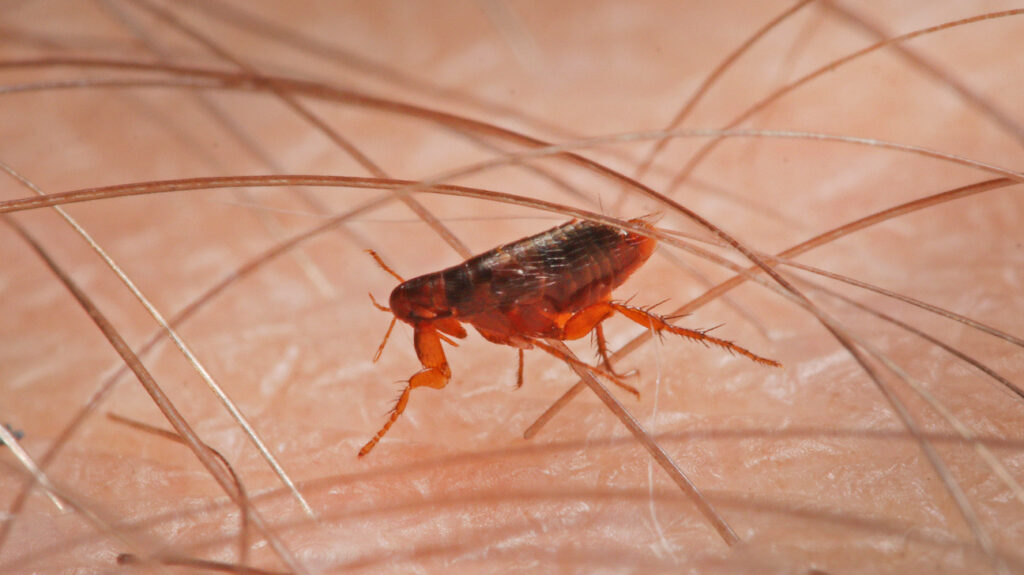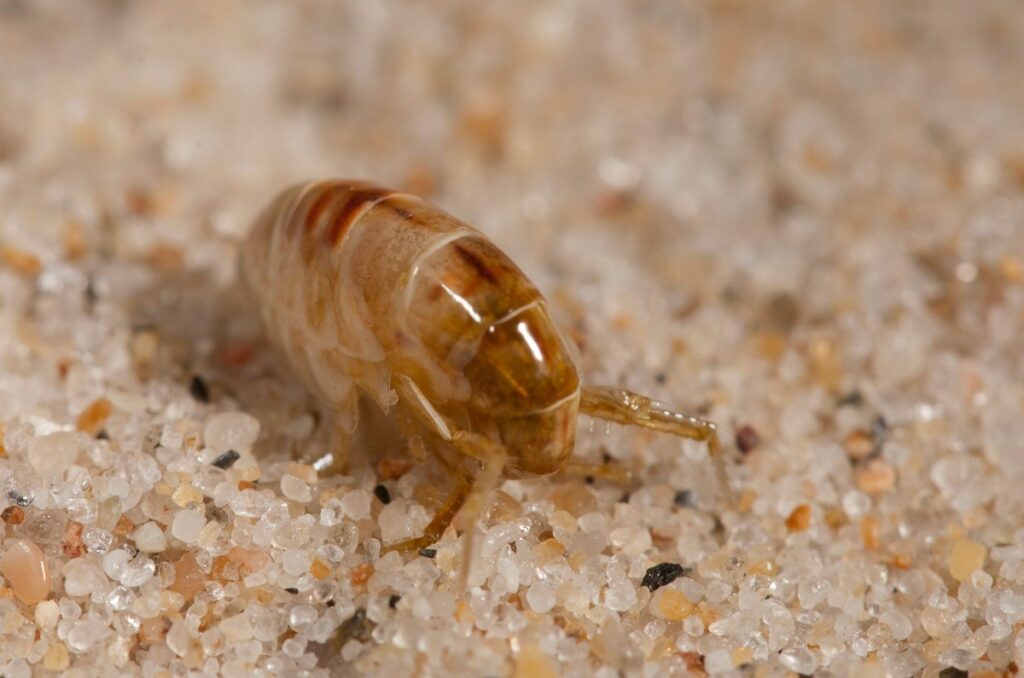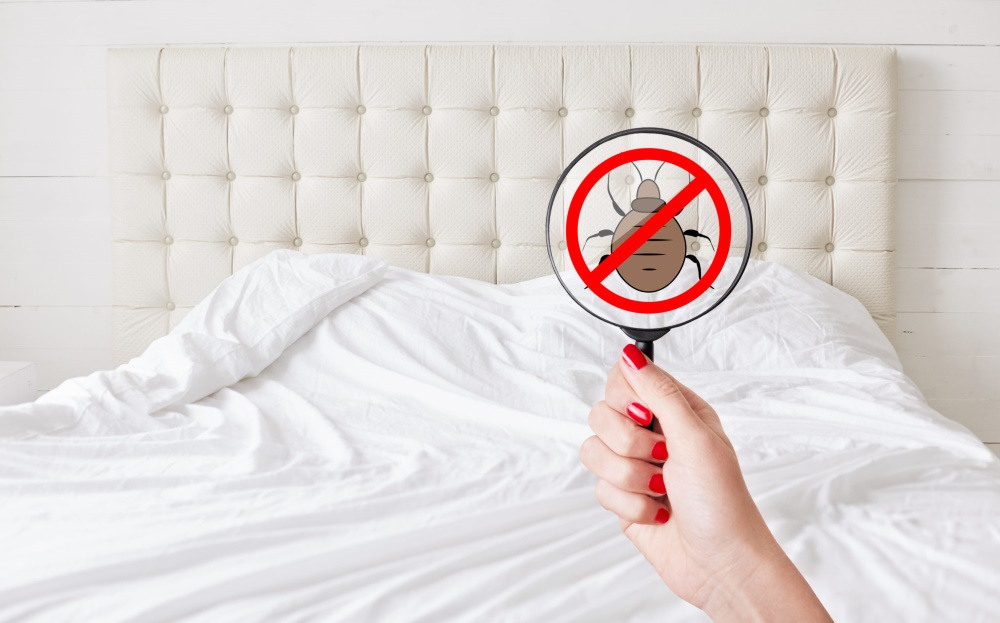

If you’re a cat lover, you are probably aware that pests can be bothersome and make your feline friend uncomfortable. When you see your cat scratching the same body part all day, it can be frustrating because you want to know why exactly this is happening.
Typically, the main culprits are parasites like fleas, mites, lice, etc. These pests can lead to behavioral changes and, in severe cases, can lead to serious conditions such as anemia. Identifying the pest that’s bothering your pet can be tricky.
For this reason, we’ll discuss how to tell if your cat has fleas, what cat fleas are, and the signs your cat has fleas. We’ll also highlight other common pests to help you better discern which pest makes your cat uncomfortable.
Cat fleas are the most prevalent domestic fleas. They are found in cats all over the world. However, they are also found on foxes, mongooses, and rats. When adult cat fleas find a host, they usually stay on that animal until they are removed. These pests feed and mate on the animal host.
Adult cat fleas are roughly an eighth of an inch long with flat sides. They have relatively long legs that are armed with tough outwardly projecting spines. Cat fleas have features that make them quickly move across the cat’s body. This makes them difficult to spot since they move quickly and strongly attach to the feline’s body. Fleas range in color from black to reddish-brown when they just feed on the host.
When an adult cat flea locates a host, it starts feeding. Then, after a few days, the female flea usually mates and begins laying eggs. This is troubling since female flea produces one egg per hour. As a result, eliminating these parasites on your furry friend is necessary.
Remember, only the adult fleas are parasitic; the rest of the life stages develop away from the host.
Are you wondering, “does my cat have fleas?” Frequent scratching isn’t the only sign that your cat has fleas. Moreover, there are other signs that indicate your cat is dealing with fleas. Note that if your cat exhibits most of these symptoms, you may be dealing with a flea infestation.
Cats are one of the cleanest pets, spending most of their time grooming to ensure their fur stays clean. So, how do you know if your cat has fleas? If your cat is dealing with lots of fleas, it may exhibit excessive and abnormal grooming behavior and may even bite at its fur, leading to hair loss and bald patches.

In severe cases of flea infestation, your cat may develop anemia from all the flea bites. Lethargy and muscle loss are common symptoms of anemia. Anemia occurs when many fleas continuously feed on the cat’s blood, resulting in wounds that may bleed and expose the cat to other vectors. This condition is known as flea anemia and is most common in sickly and old cats or kittens. Tiredness is one significant way to tell if your indoor cat has fleas.
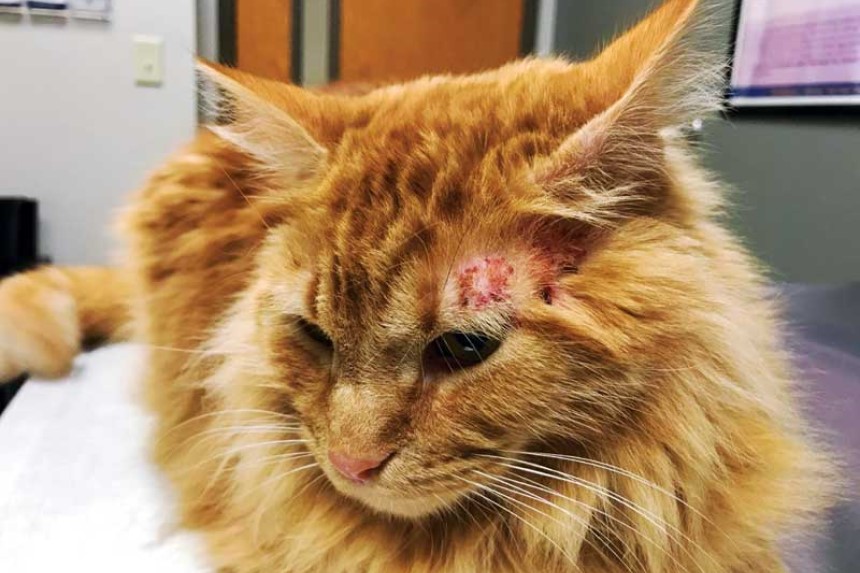
The most telltale sign that your cat has fleas is the presence of fleas and dark brown specks on the skin. These dark brown specks are flea feces, and they usually stick to the cat’s body, unlike eggs. Furthermore, there is a good chance you will notice flea eggs on your cat’s skin and fur. Check your cat’s neck, tail, and hind legs, as these are flea-prone regions.
Consider using a handheld magnifying glass to help you clearly locate the fleas. Moreover, place a piece of cloth under your cat and brush. If you see insects or dark-brown specks on the cloth, your cat most likely has fleas.
Although the signs we discussed above can effectively indicate that your cat is infested with fleas, here’s how you can be sure it’s flea infestation.
It’s quite easy to spot if your pet is dealing with flea infestation. You will notice insects and their waste lodged on the cat’s fur and skin. If the flea infestation is severe, you will notice your cat becoming restless and scratching or chewing on specific parts of its furry body. You can be certain your cat is dealing with flea infestation if you notice a change in its behaviors. We recommend conducting a proper examination or visiting a vet to do it for you.
Check areas where fleas can hide by turning your cat on his back. Fleas prefer to hide in warm areas such as the groin and under the arm. Carefully examine your cat’s ears for signs of scratching, lesions, inflammation, and dirt.
Also, look out for hair loss and patchy spots on your cat’s fur. This typically happens because the excessive scratching due to the extreme discomfort of the fleas jumping and feeding all over its body. If you are considering taking in a stray cat, follow this step to tell if a stray cat has fleas.
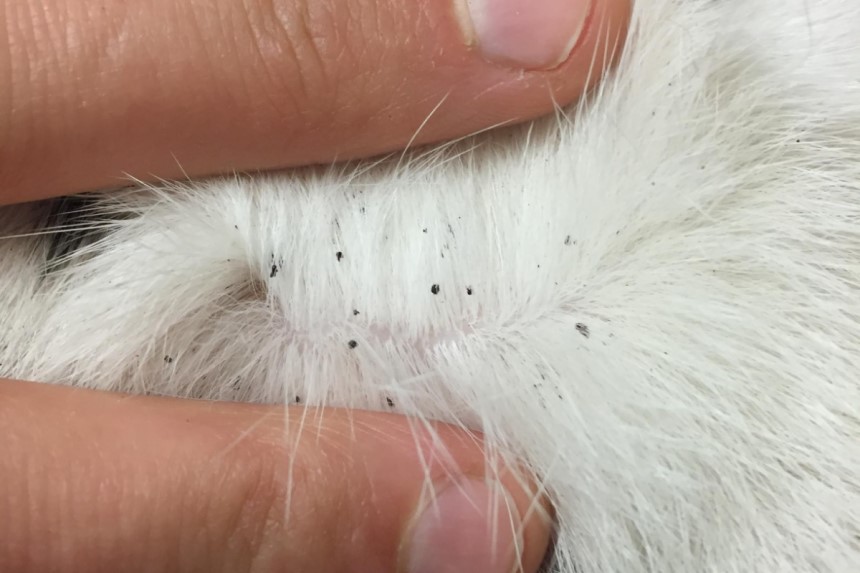 Fleas vs. Dry Skin or Dandruff
Fleas vs. Dry Skin or DandruffFleas and dandruff share some differences that make it easy to tell if your cat has fleas or dry skin/dandruff. For one, dandruff flakes appear in different shapes, whereas flea eggs are more similar in shape and size. Flea eggs are also larger than dandruff and are curvy, while dandruff flakes are flat. Furthermore, fleas are stickier and more difficult to remove than dandruff, which usually drops off easily.
There are several differences between mites and fleas that can be easily identified by thoroughly looking at them. Mites are flatter and generally bigger than fleas.
Furthermore, mites can eat plants and act as parasites or predators. On the other hand, fleas are parasitic insects that feed on blood. Fleas, unlike mites, have long hind legs that allow them to jump, making them more mobile than mites. Moreover, fleas have a tougher exoskeleton than mites. Hopefully, you now know how to tell if your cat has fleas or mites.
Fortunately, it’s not difficult to tell if your cat has fleas or lice. Fleas are more common parasites than lice and feed on blood, whereas lice typically feed on skin debris. Fleas are also more difficult to locate because they move easily and quickly through the animal fur. On the other hand, lice are less mobile and attach to hair strands with their large mouths, making them easier to spot.
There are several differences that tell if a cat has fleas or ticks. Fleas are wingless insects with six long legs. On the other hand, ticks are arachnids and have six to eight legs. Another difference is adult fleas typically settle on a single host till they die, while ticks feed on multiple hosts.
Ticks can live for up to three years, whereas fleas have a shorter lifespan of two to three months.
Fleas are also more likely to breed and infest your home and can attach to your furniture and clothes. On the other hand, ticks don’t breed as frequently and usually latch onto their hosts as they pass by.
Once you’re sure your cat has fleas, it’s time to find a way to eliminate these pesky insects quickly. Bear in mind that not all flea products treat every life stage. So, you may need to take multiple steps to treat and remove fleas from cats effectively.
If you see fleas, their eggs, or waste on your cat, begin bathing and combing your cat to remove as many as possible. However, if you own a furry feline, you probably know they can get restless during bath time. If your cat is making bathing too difficult, you can use a spray bottle to spray your cat with water and comb thoroughly with a flea comb. Kill as many fleas as you see, so they don’t jump back onto your pet.
The video below will teach you how to bathe a cat with fleas.
After removing as many fleas as possible by bathing and combing your cat, you’ll need to start treatment for fleas at every life stage: egg, larvae, pupa, and adult. Since flea eggs lay dormant for weeks, you’ll need to treat your cat for several months to prevent the eggs from hatching and causing more unwanted issues.
Cat flea medication comes in various forms. So, it’s best to consult your vet for dosing recommendations for your cat since it is determined by the pet’s age, weight, and other factors. Furthermore, ensure you double-check that the product is made for cats and not dogs because dig flea treatments can be toxic if used on your cat. Here are various types of flea treatments for your cats:
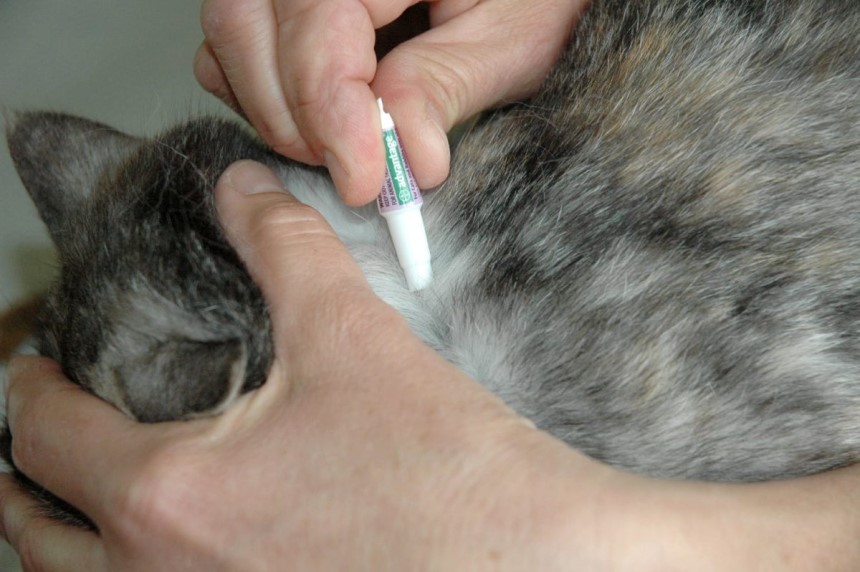 Step 3: Apply Preventive Measures
Step 3: Apply Preventive MeasuresWhile spot-on and oral flea medications may help quickly kill fleas, it is crucial to continue using them for the recommended duration to ensure you completely get rid of this flea problem. For example, one effective option for flea prevention is Advantage II. In addition, if you notice a flea-infested area in your home, it would be best if you fumigated the area to eliminate these pesky bugs from your home and reduce the likelihood of these fleas bothering your cat.
Fleas are resilient pests that can be difficult to spot and remove; their eggs can lay dormant for months before hatching and latching onto your pet or furniture. This article has highlighted how to tell if your cat has fleas. So, look out for excessive scratching, grooming, hair loss, and other signs discussed above. If your cat has fleas, your veterinarian can advise you on the most effective treatment option for your cat.

